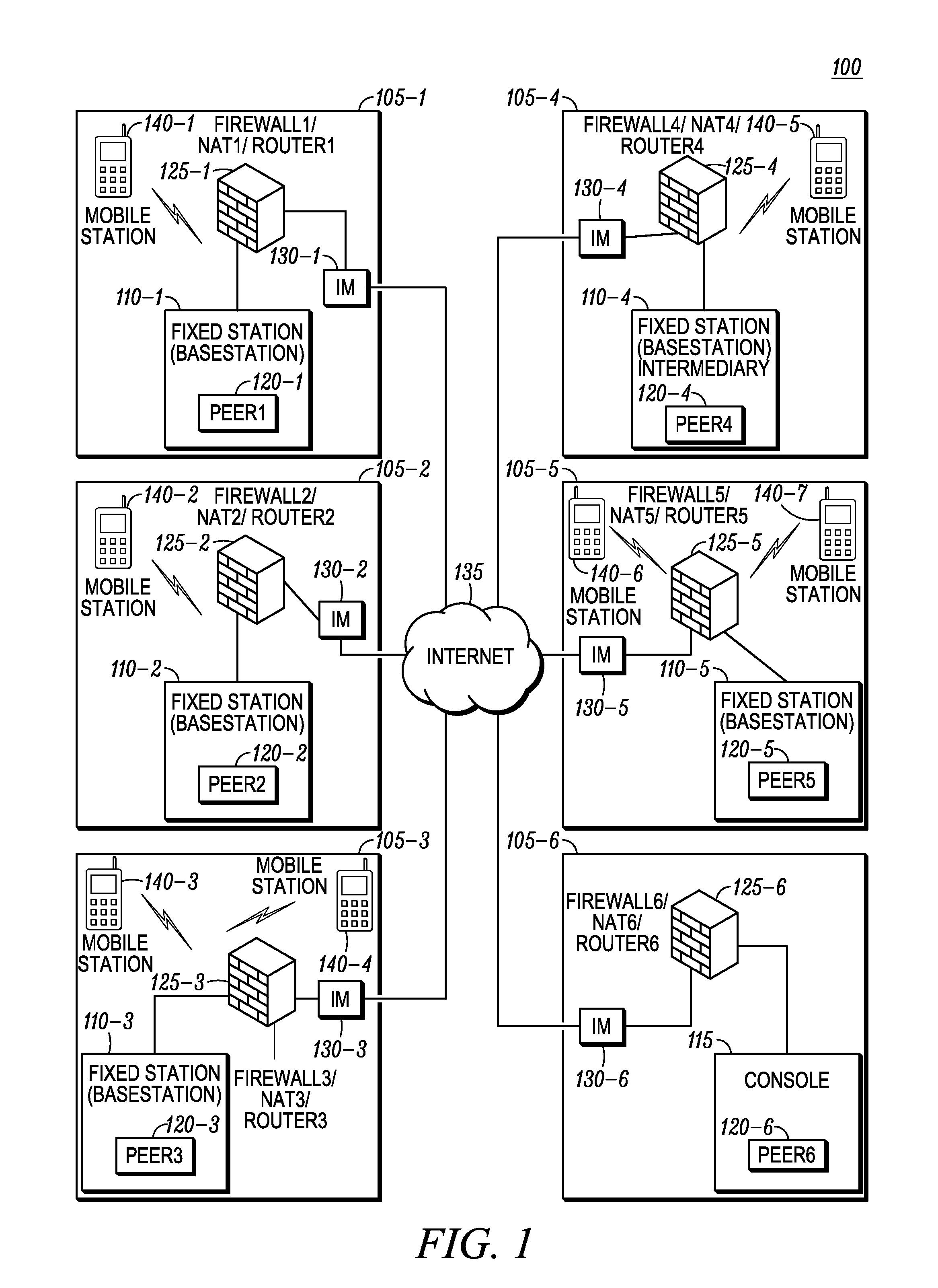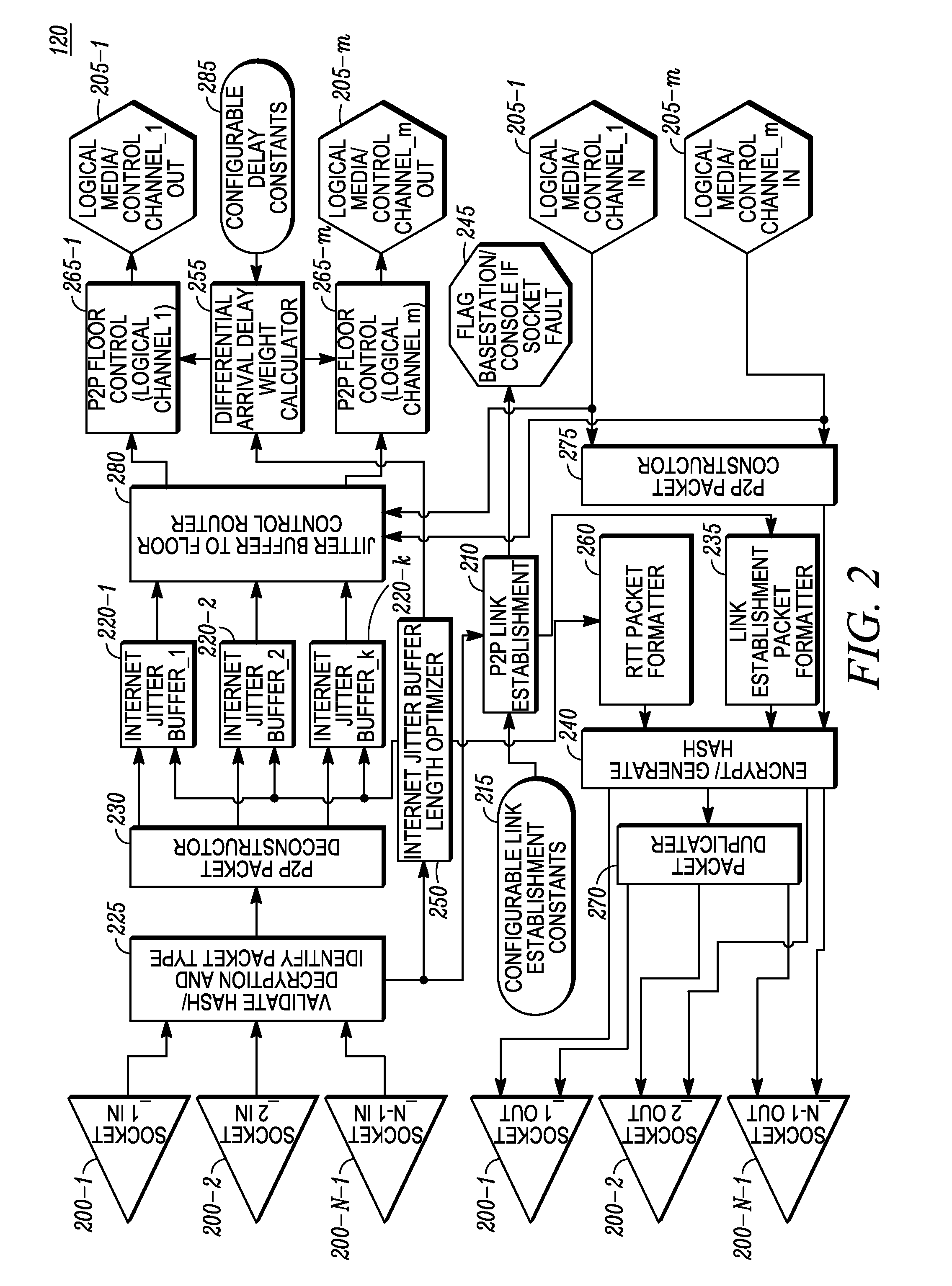Method and system for peer to peer wide area network communication
- Summary
- Abstract
- Description
- Claims
- Application Information
AI Technical Summary
Problems solved by technology
Method used
Image
Examples
Embodiment Construction
[0019]The present invention provides for the introduction of peer to peer (P2P) as a topology over the Internet. P2P is a topology where “Peers” talk directly without go-betweens. Peer-to-peer is a communications model in which each party has the same capabilities and either party can initiate a communication session. The present invention provides for embodying the Peer terminations in fixed base stations of a communication network. By providing peer to peer communications, the present invention enables mobile radio units that have both high over-the-air throughput rates like 802.11, 802.16, and the like. (see: http: / / standards.ieee.org / getieee802 / index.html or contact the IEEE at IEEE, 445 Hoes Lane, PO Box 1331, Piscataway, N.J. 08855-1331, USA), as well as low bit rates such as is employed in European Telecommunications Standards Institute Digital Mobile Radio (ETSI DMR). Note that the rates for DMR are low enough as to require audio compression (i.e. Advanced Multi-Band Excitat...
PUM
 Login to View More
Login to View More Abstract
Description
Claims
Application Information
 Login to View More
Login to View More - R&D Engineer
- R&D Manager
- IP Professional
- Industry Leading Data Capabilities
- Powerful AI technology
- Patent DNA Extraction
Browse by: Latest US Patents, China's latest patents, Technical Efficacy Thesaurus, Application Domain, Technology Topic, Popular Technical Reports.
© 2024 PatSnap. All rights reserved.Legal|Privacy policy|Modern Slavery Act Transparency Statement|Sitemap|About US| Contact US: help@patsnap.com










